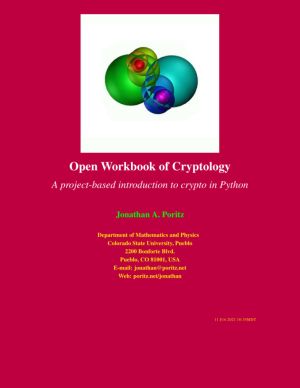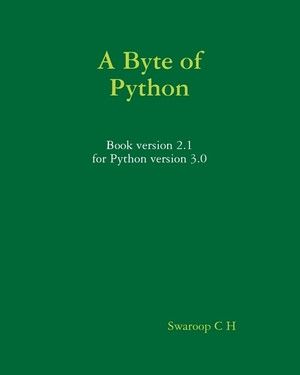PYTHON
found 112 books
by Jonathan A. Poritz
Everyone needs a little cryptology. The problem with crypto is that it has a reputation of being very hard and mysterious, as well as very easy to get wrong. While there are aspects of crypto that are connected to quite modern and complex theories - such as number theory, an old and deep branch of mathematics; complexity theory, a new(er) and su...
by Peter Wentworth, Jeffrey Elkner, Allen B. Downey, Chris Meyers
Python is a fun and extremely easy-to-use programming language that has steadily gained in popularity over the last few years. Developed over ten years ago by Guido van Rossum, Python's simple syntax and overall feel is largely derived from ABC, a teaching language that was developed in the 1980's. However, Python was also created to s...
by Allen Downey
If you want to learn how to program, working with Python is an excellent way to start. This hands-on guide takes you through the language a step at a time, beginning with basic programming concepts before moving on to functions, recursion, data structures, and object-oriented design. This second edition and its supporting code have been updated for...
by Allen Downey
Modeling and Simulation in Python is an introduction to physical modeling using a computational approach. It is organized in three parts: - The first part presents discrete models, including a bikeshare system and world population growth. - The second part introduces first-order systems, including models of infectious disease, thermal systems, an...
by Richard L. Halterman
Guido van Rossum created the Python programming language in the late 1980s. In contrast to other popular languages such as C, C++ , Java, and C#, Python strives to provide a simple but powerful syntax. Python is used for software development at companies and organizations such as Google, Yahoo, Facebook, CERN, Industrial Light and Magic, and NAS...
by Swaroop C H
Python is one of those rare languages which can claim to be both simple and powerful. You will find yourself pleasantly surprised to see how easy it is to concentrate on the solution to the problem rather than the syntax and structure of the language you are programming in. A Byte of Python is a free book on programming using the Python language...
by Massimo Di Pierro
This book is assembled from lectures given by the author over a period of 10 years at the School of Computing of DePaul University. The lectures cover multiple classes, including Analysis and Design of Algorithms, Scientific Computing, Monte Carlo Simulations, and Parallel Algorithms. These lectures teach the core knowledge required by any scientis...
by Jeff Chang, Brad Chapman, Iddo Friedberg, Thomas Hamelryck, Michiel de Hoon, Peter Cock, Tiago Antao, Eric Talevich, Bartek Wilczyński
The Biopython Project is an international association of developers tools for computational molecular biology. Python is an object oriented, interpreted,flexible language that is becoming increasingly popular for scientific computing. Python is easy to learn, hasa very clear syntax and can easily be extended with modules written in C, C++ or FORTRA...
by Mike Pirnat
Even the best programmers make mistakes, and experienced programmer Mike Pirnat has made his share during 15+ years with Python. Some have been simple and silly; others were embarrassing and downright costly. In this O'Reilly report, he dissects some of his most memorable blunders, peeling them back layer-by-layer to reveal just what went wron...
by Sundeep Agarwal
Scripting and automation tasks often need to extract particular portions of text from input data or modify them from one format to another. This book will help you learn Python Regular Expressions, a mini-programming language for all sorts of text processing needs. The book heavily leans on examples to present features of regular expressions ...










